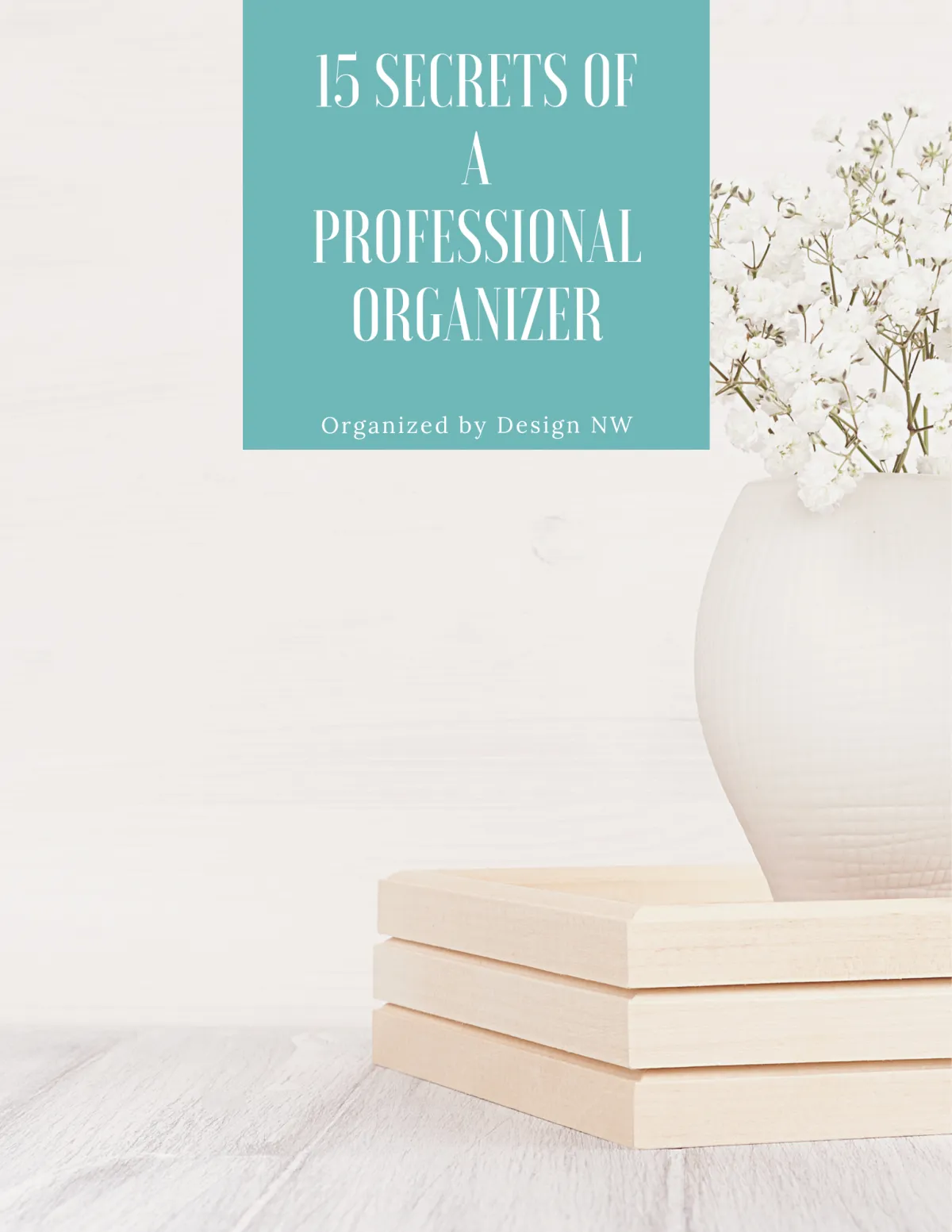
15 SECRETS OF A PROFESSIONAL ORGANIZER
15 Secrets of a Professional Organizer
1. Always keep a donation bag on each floor of your house and a box in the back of your car. Maintaining a clutter-free home will be so much easier if you have a donation bag ready for you to put unwanted items in as you find them. Also don't wait until your next big decluttering session, immediately take that shirt out of your closet and place in the bag.
2. Keep a shredder or recycling bin as close to where you would normally set your mail as possible and get rid of unneeded items immediately.
3. To prevent your stuff from taking over your home, decide how much space you want to allocate to a particular item, and then stick with that. Here's an example: I have one drawer in my dresser that I've allocated to shorts. I don't allow myself to own more shorts than can fit in that drawer. If I buy a new pair of shorts, but the drawer is full, I have to get rid of a pair of shorts. I can't put it in another drawer in the dresser. By creating limits, I ensure that I continue to live clutter-free.
4. There are only three decisions when it comes to paperwork: Act on it, trash it, or file it. File your paperwork weekly, so it doesn't grow into a mountain of papers that you dread and ultimately ignore.
5. When moving, create an "Open me first" box ahead of time. This box contains immediate essentials: toiletries, food, snacks, medicines, pet supplies, a couple days' worth of clothing for all family members, essential documents, entertainment for the kids, bedding, towels, utensils, paper plates, cups and cleaning supplies.
6. Label almost everything. This promotes items going back into the same place, and you'll create a sense of order that will help keep your household on-board as well.
7. Make a plan before you buy storage containers. You will not know how many or what size containers you actually need until this is done first.
8. All drawers in your house should have organizers in them. This makes putting items away faster and easier.
9. Make clearing all flat surfaces part of your nightly routine, flat surfaces like your dining room table, entryway table, and kitchen counters tend to accumulate piles faster than any other spot in the house. Just spending 10 minutes picking things up will help start your day off fresh.
10. Need help determining what can stay and what should go? If at least one of the following statements is yes, then it's okay to keep: I've used it within the last year. I need it. I love it. Fill your space with things that give you pleasure or celebrate your life. Remember that you can't appreciate what you have if it's hiding in a dark corner of a closet. You should display what you deem worthy of holding on to and let go of things that don't.
11. Go through everything once every few months to revisit items you think should go but didn't the first time around. You will be surprised by what you will part with the second and third time around! It gets easier the more you do it.
12. Clutter maintenance is much more a practice than anything else, and once you consistently practice decluttering in all areas of your life, only then will maintaining a decluttered home become like second nature to you.
13. Remember, the best storage solution is one that you will actually USE! Functionality is more important than how it looks. If you don't use it, then it becomes more clutter.
14. Pick just one area to focus your decluttering efforts on. Once you have completed it, then move to the next. If you bounce from one project to the next, you will get discouraged and quit.
15. Before you drop off your donations, walk around your house quickly, looking for things you don't want/like/or need. This should take less than 5 minutes, and even if you just find one thing, that is one thing less cluttering your life! But most important ALL of those boxes and bags of donations need to be removed ASAP. Don't do it tomorrow, do it today!
